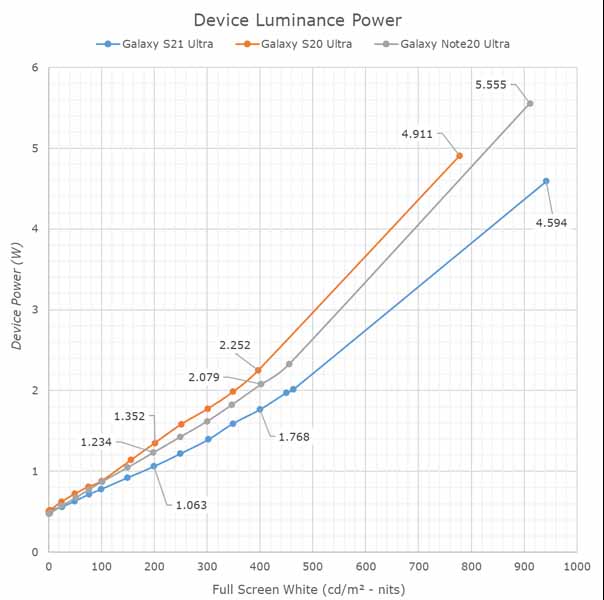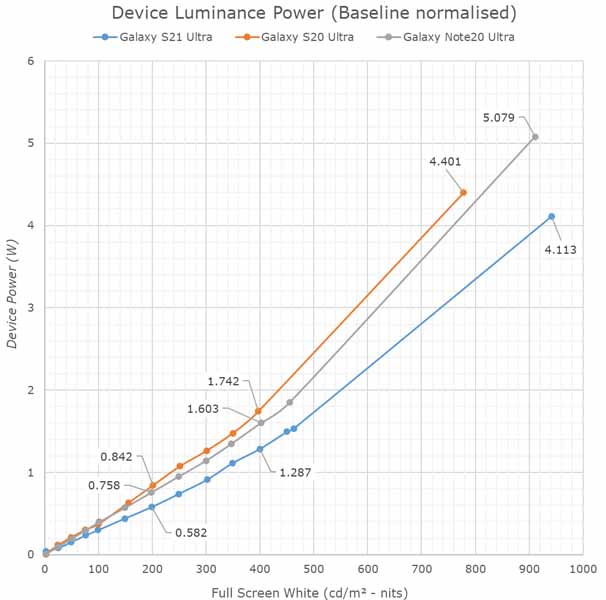
Last month. Samsung unveiled its latest flagship series at the January Unpacked Event. During this, the company unveiled its latest top-of-the-line flagship phone—the Galaxy S21 Ultra. And it isn’t just about the new chipset and design, this phone features a better display than the flagships before it or the standard S21, S21+. A recent comparison between the two devices by AnandTech has shed some light on how the display on Samsung Galaxy S21 Ultra is better than the S20 Ultra and the Note 20 Ultra.
Samsung Galaxy S21 Ultra Display
120Hz refresh rate at QHD
The most apparent difference between the display of the S21 Ultra and S20 Ultra is the advanced 120Hz capability of the former. Though both the phones have a QHD panel and refresh rate of up to 120Hz, only the latest S21 Ultra supports 120Hz at the native resolution. In the S20 Ultra, enabling the 120Hz refresh rate automatically lowers the resolution to FHD.
![Galaxy S21 Ultra - Display [2]](https://cdn.gadgetbytenepal.com/wp-content/uploads/2021/01/Galaxy-S21-Ultra-Display-2.jpg)
For this, Samsung has increased the clock speed of the MIPI (Mobile Industry Processor Interface) clock from 1157MHz to 1426MHz. Other things like the 4-lane interface are the same.
Variable Refresh Rate
S21 Ultra’s display still uses the LTPO-like Hybrid Oxide and Polycrystalline (HOP) backplane technology as the Note 20 Ultra. This enabled the variable refresh rate on these phones. The adaptive refresh rate on the Galaxy S21 Ultra can switch between 10 Hz to 120 Hz. Samsung has not changed the underlying mechanism of the variable refresh rate system. What does not mean is that, like on the Note 20 Ultra, the variable refresh rate on the S21 Ultra doesn’t work when the ambient light is below 40 lux. In situations where the ambient light is greater than 40 lux, it works perfectly fine.
Power Efficiency
In a test conducted in the Exynos 2100-powered variant of the S21 Ultra (there’s also a Snapdragon 888 variant for select markets), the phone was found to be using 469 – 481mW of power on a completely black screen with the display set at 60Hz QHD resolution. At 120Hz FHD, the phone used 558mW which is greater than the Note 20 Ultra’s 428mW. When put against the S20 Ultra, the Exynos 2100-powered S21 Ultra consumed up to 200mW and 45mW less power compared to Snapdragon 865-powered and Exynos 990-powered S20 Ultra, respectively.

As mentioned earlier, the Variable Refresh Rate (VRR) mechanism doesn’t work when ambient light is below the 40 lux mark. As a result, the phone ends up using 300mW in 120Hz mode. The difference between the power consumption is even greater when considering the fact that the displays run on a lower brightness level in such conditions.
New OLED Emitter Generation
Here, the S21 Ultra features a new OLED emitter that is exclusive to the phone, at least for now. Though this was not mentioned by Samsung, the advantage of the new emitters was apparent during the test.
Note 20 Ultra, S20 Ultra, and the S21 Ultra all have nearly the same power consumption on a completely dark screen. However, when the brightness levels of the screens are increased, the S21 Ultra showcases better power efficiency. For instance, at a peak brightness of 942 nits, it uses 20% less power than the Note 20 Ultra at 911 nits.
The normalized curve of the S21 Ultra and Note 20 Ultra matches to up to 150 nits. Then they diverge from each other. The divergence of S21 Ultra at higher brighter levels shows that the power efficiency increases with the increasing brightness levels.
For more realistic use conditions, the S21 Ultra and S20 Ultra were set at 120Hz FHD with 300 nits brightness. A static webpage was displayed on both panels. It was found that the S21 Ultra consumed 27% less power than the S20 Ultra.
Conclusion
The tests conducted by AnandTech show that the display panel on the S21 Ultra is more energy-efficient than its predecessors. Thus, the display on the Samsung Galaxy S21 Ultra will do better especially if you love using the phone in Adaptive mode and at higher brightness levels.
- Also, check out our review of the Samsung Galaxy S21 Ultra.


















![Best Ultrabooks To Buy in Nepal 2024 [Updated] Best Ultrabook Laptops in Nepal 2023 - June Update](https://cdn.gadgetbytenepal.com/wp-content/uploads/2023/04/Best-Ultrabook-Laptops-in-Nepal-2023-June-Update.jpg)
![Best Gaming Laptops in Nepal 2024 [Updated] Best Gaming Laptops in Nepal 2023 - June Update](https://cdn.gadgetbytenepal.com/wp-content/uploads/2023/04/Best-Gaming-Laptops-in-Nepal-2023-June-Update.jpg)


![Best Mobile Phones Under Rs. 15,000 in Nepal [Updated] Best Phones Under 15000 in Nepal 2024 Budget Smartphones Cheap Affordable](https://cdn.gadgetbytenepal.com/wp-content/uploads/2024/03/Best-Phones-Under-15000-in-Nepal-2024.jpg)
![Best Mobile Phones Under Rs. 20,000 in Nepal [Updated] Best Mobile Phones Under NPR 20000 in Nepal 2023 Updated Samsung Xiaomi Redmi POCO Realme Narzo Benco](https://cdn.gadgetbytenepal.com/wp-content/uploads/2024/01/Best-Phones-Under-20000-in-Nepal-2024.jpg)
![Best Mobile Phones Under Rs. 30,000 in Nepal [Updated]](https://cdn.gadgetbytenepal.com/wp-content/uploads/2023/12/Best-Phones-Under-30000-in-Nepal-2024.jpg)
![Best Mobile Phones Under Rs. 40,000 in Nepal [Updated] Best Phones Under 40000 in Nepal 2024 Smartphones Mobile Midrange](https://cdn.gadgetbytenepal.com/wp-content/uploads/2024/02/Best-Phones-Under-40000-in-Nepal-2024.jpg)
![Best Mobile Phones Under Rs. 50,000 in Nepal [Updated] Best Phones Under 50000 in Nepal 2024 Smartphones Midrange](https://cdn.gadgetbytenepal.com/wp-content/uploads/2024/02/Best-Phones-Under-50000-in-Nepal-2024.jpg)
![Best Flagship Smartphones To Buy In Nepal [Updated] Best Smartphones in Nepal 2024 Flagship Premium Samsung Apple iPhone Xiaomi OnePlus Honor](https://cdn.gadgetbytenepal.com/wp-content/uploads/2023/09/Best-Smartphones-in-Nepal-2024.jpg)